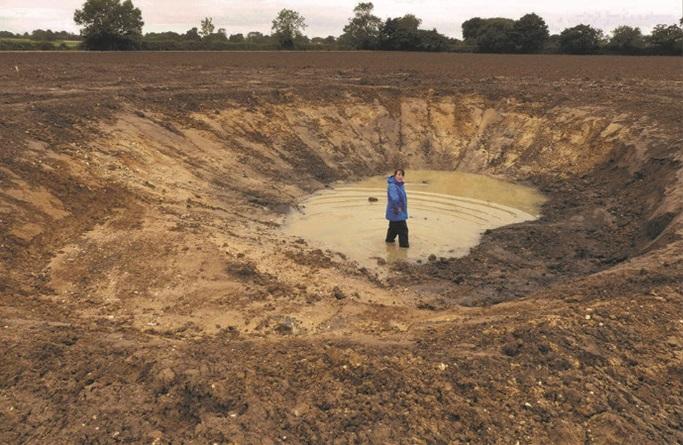Scientists May Be Able To Resurrect Buried Plants In 'Ghost Ponds'
Researchers at the University College London have uncovered a stunning revelation with ghost ponds. These poorly-drained ponds have stunted the agriculture put on top of them, but once excavated, they can flourish like they have in the past.
Updated May 23 2019, 5:04 p.m. ET
Could extinct plant species be brought back to life? That’s what some researchers in the United Kingdom believe after finding “ghost ponds.” Seeds and eggs left over in the soil trapped under water and farmland could be regrown, and that may fuel the return of agricultural wetlands around the area.
Ghost ponds are found underneath agricultural land as the result of poor drainage. There were hundreds of thousands of ponds in England at the turn of the 1900’s, but these were eliminated to create more productive land over the years. Over 75 percent of them are now gone, but many ghosts ponds that remain create havoc for those wanting to farm on top of them. The ground doesn’t collect enough water and stunts crop growth.
Researchers from the University College London studied three ghost ponds that existed anywhere from 45 to 150 years ago. When they were excavated and studied on, leftover seeds and eggs that were trapped underwater could be restored. In a news article from the university, Dr. Carl Sayer noted that eight different aquatic plant species survived.
“Ghost ponds represent abundant yet overlooked biological time capsules and it is thought that the restoration process could play a significant role in reversing some of the habitat and biodiversity losses caused by the global disappearance of agricultural wetlands. Indeed, using the approaches demonstrated by the study, it may even be possible to resurrect locally and indeed nationally extinct plant species in the future.”
Christopher Hassall, a lecturer in biological sciences at the University of Leeds, tells New Scientist that he was fascinated by the findings. He believes that this is a good way to reverse what “we have done to the environment.” He’s also excited about the potential to resurrect species that have thought to have been extinct.
“For plants to grow back after being buried for over 150 years is remarkable. Ponds are often neglected compared to lakes and rivers because of their small size, but they punch above their weight in terms of the number of species that they contain.”
After just six months of cultivating the ghost pond after digging it up, the area flourished with plants and wildlife. They essentially resurrected dead wetlands and it shows how quickly they are able to restore a valuable resource. These habitats are certainly better than attempting to grow crops on top of them.
Emily Alderton, the lead author of the report at University College London, hopes that this report can be the starting point of regenerating wetlands: “ We urge conservationists and policy makers to consider utilizing and restoring these valuable resources in biodiversity conservation schemes and in agri-environmental approaches and policies.”

